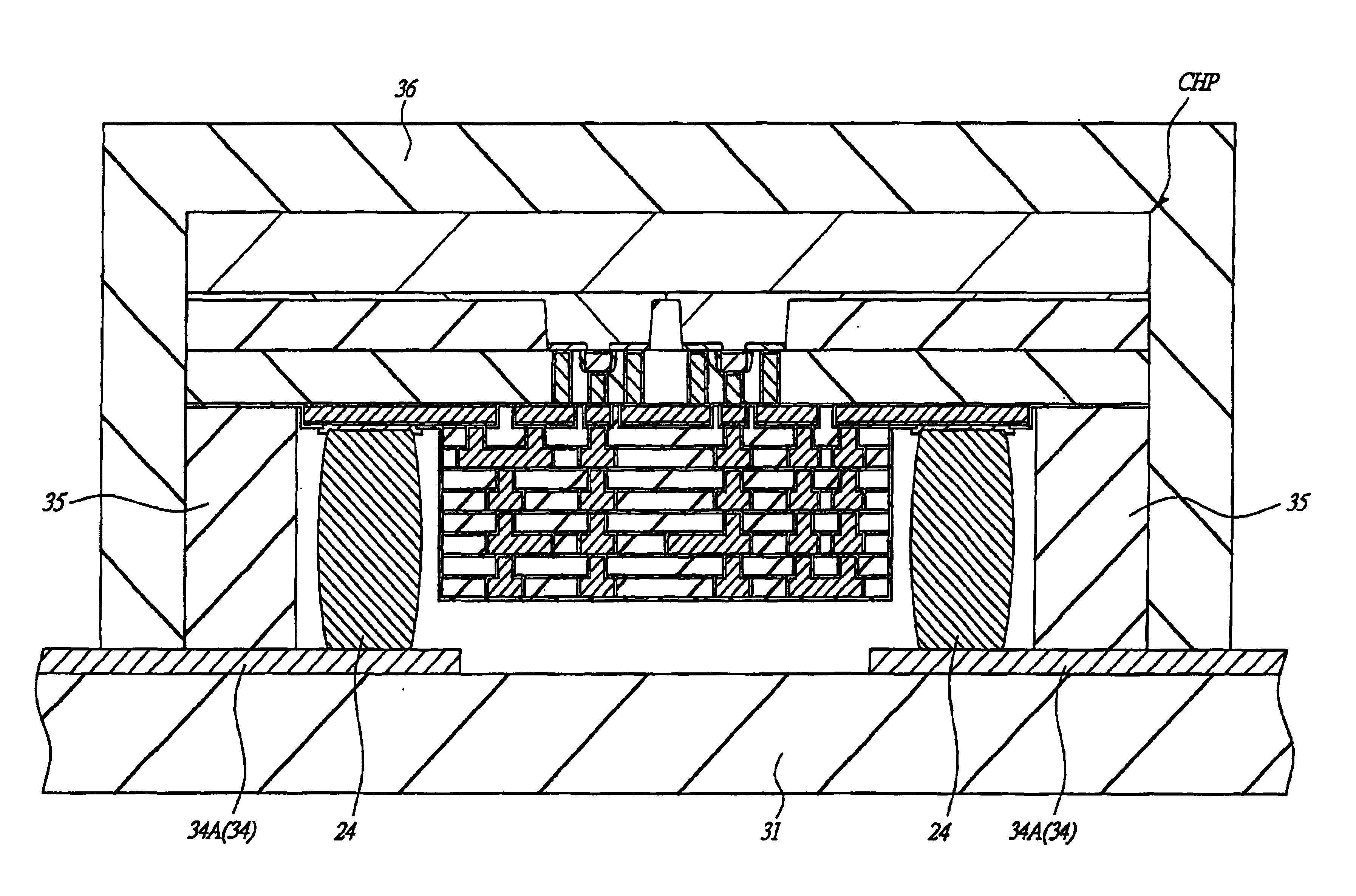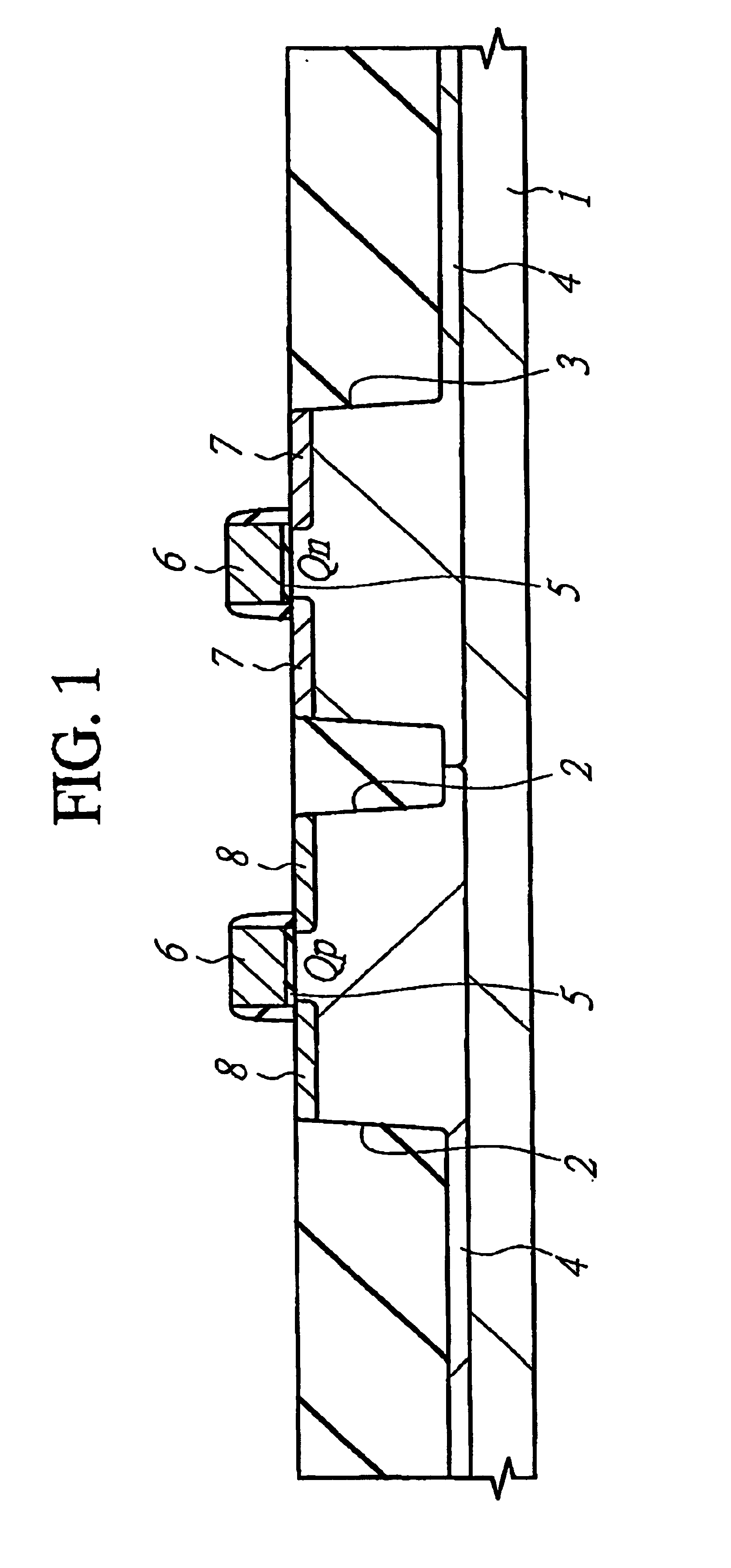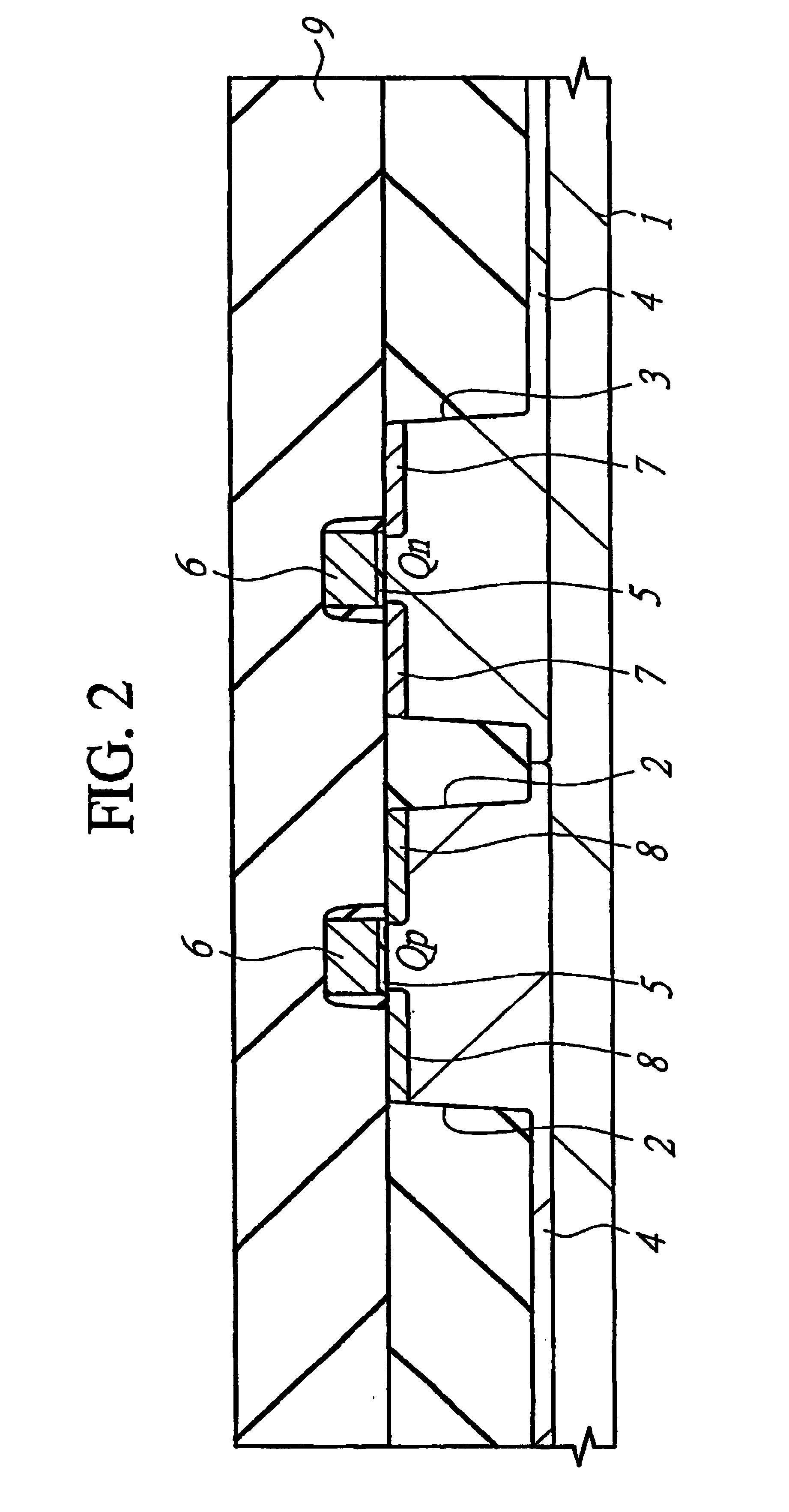Semiconductor device and manufacturing method thereof
a semiconductor device and manufacturing method technology, applied in the direction of semiconductor devices, semiconductor/solid-state device details, electrical apparatus, etc., can solve the problems of disconnection of the wiring, and separation between the wirings, so as to increase the parasitic capacity between the wirings, high integration of the semiconductor device, and high density of the wiring
- Summary
- Abstract
- Description
- Claims
- Application Information
AI Technical Summary
Benefits of technology
Problems solved by technology
Method used
Image
Examples
first embodiment
[0042](First Embodiment)
[0043]A semiconductor device according to this first embodiment has a CMISFET (Complementary MISFET). The manufacturing process of a semiconductor device according to the first embodiment will be described with reference to FIGS. 1 to 16.
[0044]As shown in FIG. 1, a semiconductor substrate 1 made of monocrystal silicone having a specific resistance of approximately 10 Ωcm is thermally treated at approximately 850° C., and a thin silicone oxide film (pad oxide film) having a thickness of 10 nm is formed on its main surface (device formation surface). Next, a silicone nitride film with a thickness of approximately 120 nm is deposited on this silicone oxide film by a CVD (Chemical Vapor Deposition) method and, thereafter, the silicone nitride film and the silicone oxide film in a device separation region are removed by dry etching using a photoresist film as a mask. The silicone oxide film is formed in order to relax a stress applied to the substrate at the time ...
second embodiment
[0076](Second Embodiment)
[0077]FIG. 18 is a sectional view showing a principal portion of a semiconductor device in a manufacturing process according to a second embodiment. In a second embodiment as shown in FIG. 18, the semiconductor chip CHP is packaged using the insulation tape 31 from which the resin member 35 (see FIGS. 15 to 17) described in the first embodiment is omitted. The resin 36 sealing the rear and side surfaces of the semiconductor chip CHP has viscosity in an non-solidified condition, and so if a plurality of bump electrodes 24 adjacent thereto are formed at an interval smaller than a predetermined one, the resin 36 cannot flow into the main surface side of the semiconductor chip CHP through a gap between the adjacent bump electrodes 24. That is, it is possible to provide the bump electrodes 24 with the same function as that of the resin member 35 shown in FIG. 1.
[0078]Also, as shown in FIG. 19, even if the insulation tape 31 from which the resin member 35 is omitt...
PUM
 Login to View More
Login to View More Abstract
Description
Claims
Application Information
 Login to View More
Login to View More - R&D
- Intellectual Property
- Life Sciences
- Materials
- Tech Scout
- Unparalleled Data Quality
- Higher Quality Content
- 60% Fewer Hallucinations
Browse by: Latest US Patents, China's latest patents, Technical Efficacy Thesaurus, Application Domain, Technology Topic, Popular Technical Reports.
© 2025 PatSnap. All rights reserved.Legal|Privacy policy|Modern Slavery Act Transparency Statement|Sitemap|About US| Contact US: help@patsnap.com



